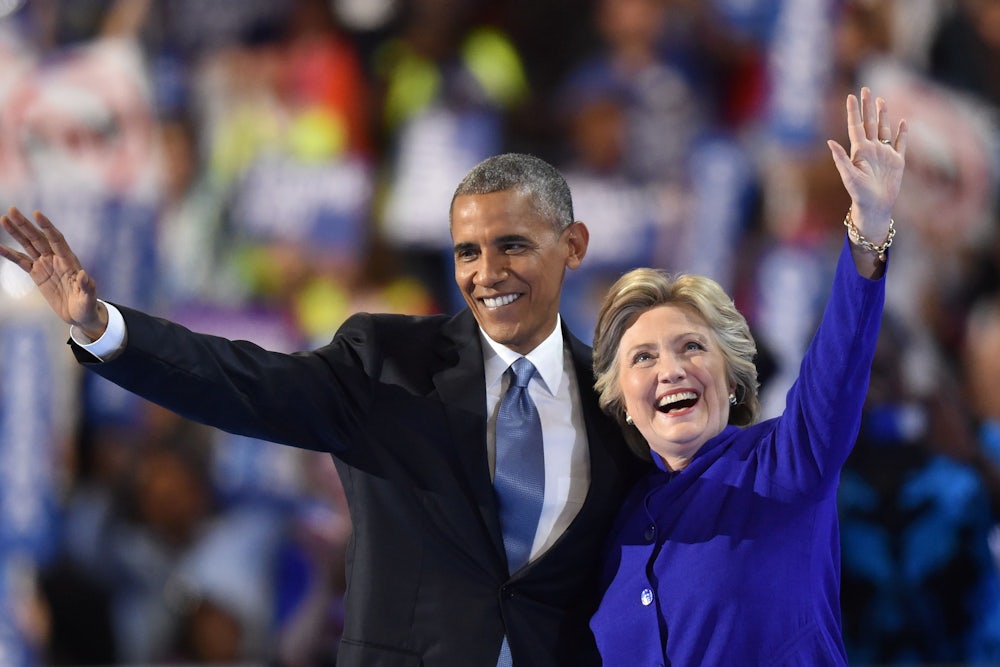To defeat Donald Trump, Hillary Clinton is assembling a much wider popular front than even the Obama coalition. As evidenced by the Democratic National Convention, this front runs from the democratic socialist Bernie Sanders to the centrist Bill Clinton to the disaffected former Republican Michael Bloomberg. Much of the turmoil of the convention has come from the difficulty of bringing together these different factions, which still heatedly disagree on issues like trade and foreign policy.
The recurring theme of the third night in Philadelphia was that the Democrats offer a welcoming home to Republicans alienated by Trump’s antics. The speakers made a convincing case, and more importantly, they did so without offering any sort of compromise.
Polls show that suburban, college-educated whites, who traditionally vote Republican, are balking at voting for Trump. That’s the audience the Democrats went after again and again on Wednesday night. The most obvious pitch came from Michael Bloomberg, who was far from enthusiastic in his endorsement of Clinton but made a powerful case that she’s the only alternative to Trump’s demagoguery. But the former New York mayor served as a voice from outside the party who could explain why even those who disagreed with many Democratic ideas could still vote for Clinton.
“I’ve been a Democrat, I’ve been a Republican, and I eventually became an independent because I don’t believe either party has a monopoly on good ideas or strong leadership,” Bloomberg said. “There are times when I disagree with Hillary. But whatever our disagreements may be, I’ve come here to say: We must put them aside for the good of our country. And we must unite around the candidate who can defeat a dangerous demagogue.”
Vice presidential nominee Tim Kaine made a more positive and personal version of the same speech by citing his father-in-law, Linwood Holton, who had been Republican governor of Virginia from 1970-1974.
“Lin’s still a Republican,” Kaine said. “But he’s voting for Democrats these days. Because any party that would nominate Donald Trump for president has moved too far away from the party of Lincoln. And if you are looking for that party of Lincoln, we’ve got a home for you right here in the Democratic Party.”
President Barack Obama sharpened Kaine’s point but arguing that not only is the Democratic Party a haven for Trump-traumatized Republicans, but also that Trump’s demagogic politics were so extreme that they fell outside the conventional divisions between the two parties.
“We Democrats have always had plenty of differences with the Republican Party, and there’s nothing wrong with that,” he said. “It’s precisely this contest of ideas that pushes our country forward. But what we heard in Cleveland last week wasn’t particularly Republican—and it sure wasn’t conservative. What we heard was a deeply pessimistic vision of a country where we turn against each other, and turn away from the rest of the world. There were no serious solutions to pressing problems—just the fanning of resentment, and blame, and anger, and hate.” Obama also contrasted Ronald Reagan’s “City on a Hill” view of America with Trump’s dystopian vision.
Casting Trump in opposition to traditional conservatism and Republican doctrine allowed Obama and Kaine to pull off a daring ideological move: They made an appeal to Republicans without diluting their liberalism. Obama pointedly praised Bernie Sanders even as he made a pitch to Republicans, and he and Kaine both talked about gun control and economic fairness. In effect, they were saying to Republicans: Trump is so toxic that you have to come over to us, and we’ll be happy to have you, but we won’t change our core values.
A few prominent die-hard Republicans acknowledged the courtship:
American exceptionalism and greatness, shining city on hill, founding documents, etc--they're trying to take all our stuff
— Rich Lowry (@RichLowry) July 28, 2016
Text just now from a senior House Republican who gave me permission to tweet this: “We were supposed to make that sort of speech."
— Erick Erickson (@EWErickson) July 28, 2016
The last time liberal politicians had the luxury of trying to appeal to moderate Republicans while remaining steadfastly to the left on policy was in 1964, when Lyndon Johnson won over many voters who found Barry Goldwater beyond the pale. If the gambit on display Wednesday night works, we could see a seismic realignment of American politics.
